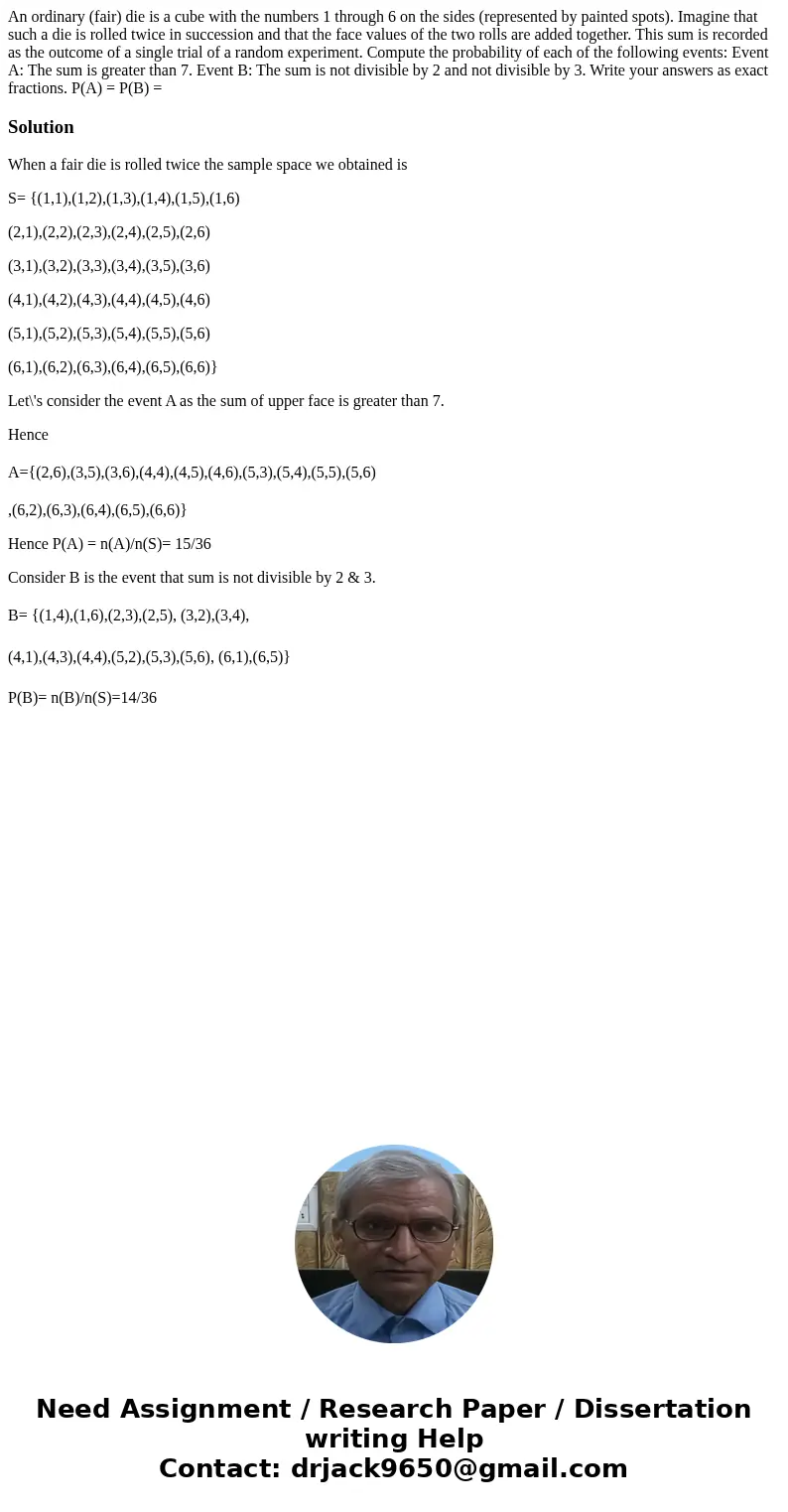An ordinary fair die is a cube with the numbers 1 through 6
An ordinary (fair) die is a cube with the numbers 1 through 6 on the sides (represented by painted spots). Imagine that such a die is rolled twice in succession and that the face values of the two rolls are added together. This sum is recorded as the outcome of a single trial of a random experiment. Compute the probability of each of the following events: Event A: The sum is greater than 7. Event B: The sum is not divisible by 2 and not divisible by 3. Write your answers as exact fractions. P(A) = P(B) = 
Solution
When a fair die is rolled twice the sample space we obtained is
S= {(1,1),(1,2),(1,3),(1,4),(1,5),(1,6)
(2,1),(2,2),(2,3),(2,4),(2,5),(2,6)
(3,1),(3,2),(3,3),(3,4),(3,5),(3,6)
(4,1),(4,2),(4,3),(4,4),(4,5),(4,6)
(5,1),(5,2),(5,3),(5,4),(5,5),(5,6)
(6,1),(6,2),(6,3),(6,4),(6,5),(6,6)}
Let\'s consider the event A as the sum of upper face is greater than 7.
Hence
A={(2,6),(3,5),(3,6),(4,4),(4,5),(4,6),(5,3),(5,4),(5,5),(5,6)
,(6,2),(6,3),(6,4),(6,5),(6,6)}
Hence P(A) = n(A)/n(S)= 15/36
Consider B is the event that sum is not divisible by 2 & 3.
B= {(1,4),(1,6),(2,3),(2,5), (3,2),(3,4),
(4,1),(4,3),(4,4),(5,2),(5,3),(5,6), (6,1),(6,5)}
P(B)= n(B)/n(S)=14/36

 Homework Sourse
Homework Sourse